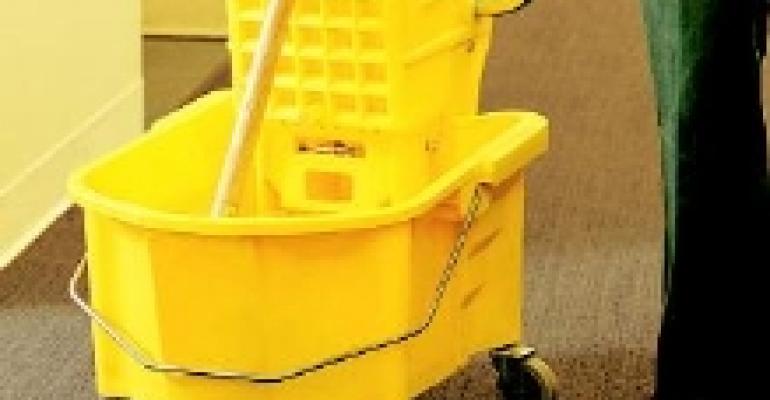 |
| |
Common and costly, slips and falls are the second leading cause of workplace injuries. With no one-size-fits all solution, operators must pay special attention to the overall safety of their restaurant environment, particularly when it comes to slips, trips and falls.
Each year more than three million foodservice employees and one million guests are injured as a result of slip-and-fall accidents. Many operators overlook the problem, claiming it as an accident that cannot be prevented. Yet it prevails as the number one preventable loss type in the workplace.
In Slip and Fall Prevention: A Practical Handbook, author Steven Di Pilla notes: "Each person takes an average of 18,000 steps a day, amounting to more than 6.5 million steps annually. This represents a tremendous exposure."
Because of many organizational, environmental and personal factors that can contribute to slips and falls, good design is vital. Even a slight, but sudden increase in grade along a walkway can result in a trip. So, how do you lower the number of incidents in your operation? It all starts at the ground level.
Walking surfaces
According to the National Floor Safety Institute, wet or otherwise dangerous floors directly cause most slips and falls that occur in the foodservice industry. While some areas of your restaurant are, by their nature, more prone to danger, a good inspection and maintenance program will prevent most accidents.
Footwear
Proper footwear is an important element in the battle to prevent slips and falls. Exercise a high degree of control over the type of footwear employees use. Simply put, insist that all employees wear "proper" footwear.
Slip-resistant treads on shoes are critical. If slip-resistant shoes are on order and not readily available, make sure slip-resistant overshoes are on hand for new hires.
Proper footwear is among the most effective tools to prevent slips and falls among your staff. The right footwear can reduce the number of incidents in your operation by 70%-80%, according to industry experts.
One shoe manufacturer is so confident that its shoes will prevent slips and falls, that it will reimburse your company for up to $5,000 for each worker's compensation claim paid. Not a bad warranty on a $25-$50 product. It's a deal that has convinced many of the top chains to jump on the "...or your money back" bandwagon.
Prevention is the key to reducing slip-and-fall injuries.
Whatever style of shoe you select, make sure it featuresslip-resistant soles with a special rubber compound. Also look for a tread design that offers maximum slip resistance. If the cost of implementing a slipresistant shoe program is a concern, think again. Many restaurant companies incur no costs because employees pay for their shoes through a voluntary payroll deduction.
As a bonus, making slip-resistant footwear mandatory also leads to a decline of other types of employee accidents, including cuts and burns.
Surface Contaminants
Besides food spills on walkways, any number of contaminants can create a slippery surface. Make sure your floors are properly cleaned and treated. Document test results. Install slip-resistant mats and coatings in dangerous areas. Also, before you buy floor materials and finishes, pretest them.
Signage and Lighting
If your restaurant features changes in floor levels or any other trip hazards, erect visible and understandable signs to warn customers and staff. Properly illuminate walkways.
Slips and fall are a serious problem that can, if not eliminated entirely, certainly be reduced by taking the proper precautionary steps. You'll not only reduce the number of injuries, you'll likely save money as well.





